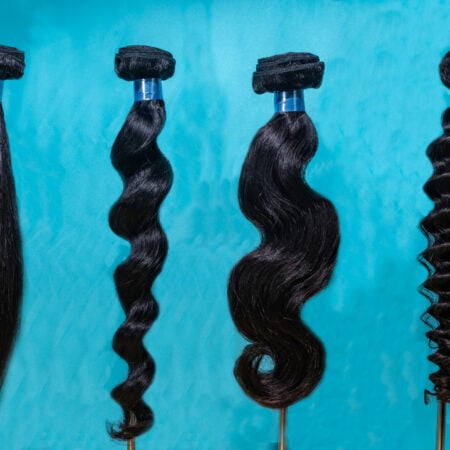Many women and men the world over use hair extensions to define their style, change up their look, and to aid in the transitioning between short and long hair cuts. Hair extensions can give you the long locks of your dreams, let you try out bangs with no long-term consequences, or be used as a protective style for your natural hair.
If you are interested in investing in hair extensions, you’re probably overwhelmed by the sheer amount of extension possibilities and components that are available for selection. Fortunately, we’ve decided to help you out by creating a complete guide to hair extensions.
Read on to learn about the many different types of hair extensions, differing application methods, and the longevity and care guidelines for each type of extension.
Why Use Hair Extensions?
Hair extensions can be the perfect accessory if you want to change up your style for a little while or want to change the look of your slow-growing hair. They can also be a great option for covering up a shorter hairstyle that needs time to grow out, or in the case of sew-in extensions, can act as a protective style for your hair.
There are many different types of hair extensions that can be added into your hair, and several application styles and materials that can be mixed and matched with your chosen extension. You should be aware, however, that hair extensions can become quite costly, depending on the type of hair and application methods you are selecting, and that some kinds of hair extensions have the potential to damage your natural hair.
We will cover all of these factors in our complete list of the types of hair extensions below.
Deciding Between Real and Synthetic Hair Extensions
One of the most important factors in your hair extension journey is deciding between real human hair extensions or synthetic extensions. Both options have their own pros and cons, so it is up to you to decide what fits your preferences and lifestyle better.
How They Are Made
Real human hair extensions are created from donated or purchased human hair; this hair is then treated and formed into extensions. The hair will be organized so that all the cuticles of the hair are running in the same direction, as this prevents tangling and allows the hair to maintain a soft feel. Human hair extensions generally feel softer, look silkier, and can appear more natural when blended in with your real hair.
Synthetic hair extensions are created from blended synthetic fibers, usually very fine and delicate plastic fibers. These fibers are then treated and combined together to give the look and feel of human hair; they will be organized in the same way, with the cuticles all at the same area and can be manufactured to any type of length.
Because of the manufactured nature of these extensions, synthetic extensions can feel a little bit stiffer or coarser than natural hair, and may not blend as well with natural hair due to this.
Ability to Be Colored and Styled
Human hair extensions have a lot more freedom when it comes to coloring and styling once they are applied. Because it is natural hair, it holds up well to bleaching, dyeing, and heat styling, as long as you don’t overdo it. You can also easily use hair products on real hair extensions, as they will interact with the extensions the same way they would with your natural hair.
Synthetic hair extensions, on the other hand, are much harder to color and style. Due to the manufacturing process, it is hard to bleach or dye these extensions without completely ruining them. In most cases, if you want to change your extension color, you will have to remove the current extensions and purchase a new set in the desired color.
It is also more difficult to use heat styling on synthetic extensions, as they are mostly made of plastic fibers, and too much heat can melt them, leaving them looking a little bit wonky. If you want to heat style your synthetic extensions, you will need to use the coolest heat setting possible, which can take much longer to style.
How Long the Extensions Last
Synthetic extensions can last about two to three months with regular heat styling, and about 6 months if they are well taken care of without heat styling or too much washing.
Similarly, human hair extensions will last you between 3 and 6 months with lots of styling or washing, or can stay put up to a year if you take very good care of them and don’t wash or heat style too much.
The Pricing of the Extensions
For those on a budget, synthetic hair extensions are typically much cheaper than human hair. This is simply due to the nature of the materials and how easy it is to obtain them.
Human hair extensions can be much more expensive, due to the fact that they involve real human hair that has to be sourced from an individual and then treated to turn into extensions.
The Application of Hair Extensions

There are two main application types for applying hair extensions that you or your stylist may use to get your extensions looking their best.
Strand by Strand
Strand by strand application involves applying the hair extensions to small sections of your natural hair. Each hair bundle in these extensions will have between 20 and 40 strands in it on average, and a hairstylist will carefully apply the strands one by one to your hair.
Because this is more labor-intensive work, it can be much more expensive to have hair extensions applied like this. You also need to be very careful in the care of strand by strand applications, because if it is applied or taken out the wrong way, it will be very painful; there is also a risk of these extensions clumping together unnaturally if you don’t take proper care of them.
That being said, strand by strand applications can be a great choice for someone with very thick or coarse hair who needs careful placement of their extensions; they can add to the length of the hair while adding minimal volume and looking very natural. They are also more durable and tend to be a little longer lasting, thanks to their careful placement and individual bondage to small sections of natural hair.
Wefted Hair Panels
Wefted hair panels look like sheets of hair that either have clips, tape, or glue along the top edge where the cuticles of the hair lines up. This type of extension is applied to the head in one go, often placed between sections of natural hair that help to hide the attachment area.
Hair panels are a lot cheaper and easier to apply and remove than strand by strand applications and make a good choice if you are looking for hair extensions without a lot of commitment. However, they are slightly less durable, not as long-lasting, and they can add too much volume to thick or coarse hair if they are not applied correctly.
Types of Wefts and Why They Matter
Wefts of hair can be created and tied off in several different ways, a factor which can determine how the hair panel will act once it is in your hair. It’s important to understand the differences between hair wefts so you can choose the one best suited to your individual hair type.
Hand-Tied
Wefted hair panels that are hand-tied tend to be a lot more similar than other types, making them more natural-looking and easier to blend into hair. For this type, the ends of the hair are placed altogether on the same line and then woven together by hand, ensuring that no hair piece will fall out. They are more expensive because of this weaving method, but they tend to maintain their integrity much longer.
Hand-tied wefts are typically sewn into hair, as this is what keeps them looking neat; fusion or tape methods can leave the weft looking bulky and unnatural. You cannot cut this type of weft, as it will cause the entire panel to unravel, leaving behind a mess.
Anyone who is very worried about their hair extensions showing or someone who has very thin or fine hair will benefit from hand-tied wefts.
Machine Made
Machine made wefts are much less expensive to buy and a little more flexible when it comes to cutting them. The way they are made allows you to cut or trim up these extensions without the entire hair panel unraveling, unlike with hand-tied wefts.
This type of weft is thicker and sturdier, which can be great for adding volume or seriously changing up your hair style, but they may also look less natural and too bulky for some hair types. Machine made wefts are also notorious for shedding, which may put some people off of them.
Injection Molded
Wefts that are injection molded are reusable, and are typically applied to hair using the tape-in method. This type of hair panel is a little bit thinner and more lightweight than other wefts, and will have an area at the top that either contains the area of tape or glue, or the clip-in clip. They attach fairly securely to hair and can add length without building up the volume too much, which is perfect for thinner hair types.
That being said, if injection molded wefts are not applied correctly, they will look very unnatural, as the top of the weft clearly shows that the hair is an extension and not natural hair. They would not be the best choice for someone who wants to keep their hair extensions as secret as possible.
Types of Hair Extensions
Below, we have listed the most popular types of hair extensions that you can receive. There may be some other types that are not included on this list, but we have collected the most common and most effective hair extension types that most hairdressers will be able to apply, or that you can DIY yourself at home.
Tape-In Extensions
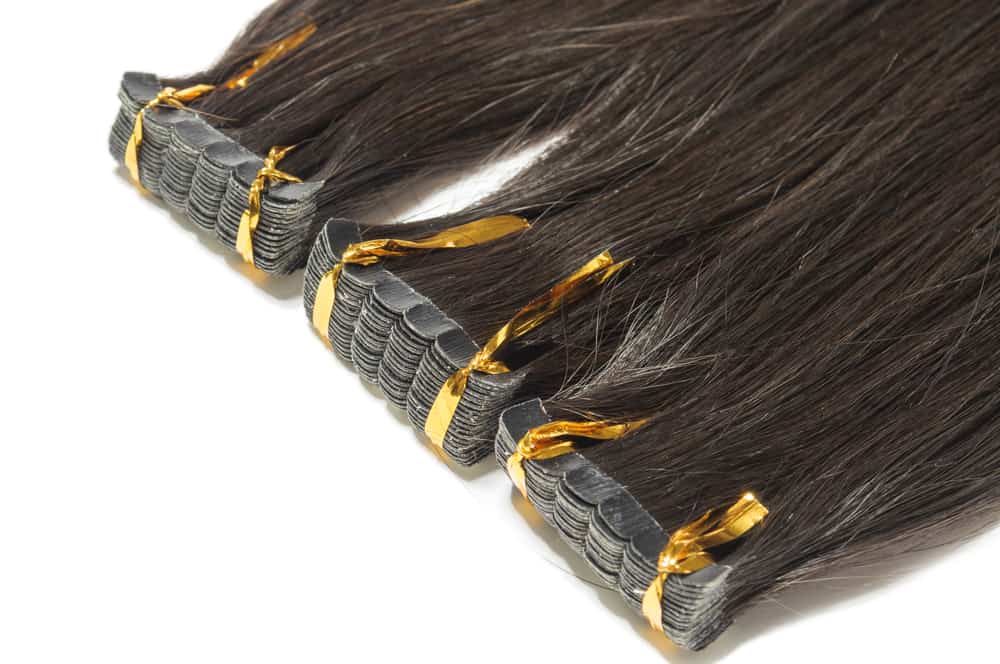
Tape-in hair extensions come pre-taped with a section of adhesive that extends over the ends of the cuticles. This tape is then placed a little bit below the roots of your natural hair in the areas you want the extensions applied. A hot tool, such as a flat iron, is then used to seal the adhesive area to your natural hair, as seen in this video.
In order to remove tape-in extensions, a glue remover needs to be applied to the adhesive and the extensions carefully pulled away from the natural hair; you can sometimes reuse tape-in extensions if they are cared for properly while applied.
This type of extension takes around an hour to apply and needs to be cared for very carefully; hair products and conditioners can cause the adhesive to loosen or slide off your hair, so it is recommended that you use certain products designed for use with hair extensions, and avoid touching the area of attachment altogether when styling or washing your hair.
How Long They Last
A semi-permanent extension, tape-ins will generally last one to two months before they start looking like they need to be replaced. This time period can be shorter or longer depending on the material of your extension, the application, and how well you take care of the extension once it is applied.
Clip-In Extensions
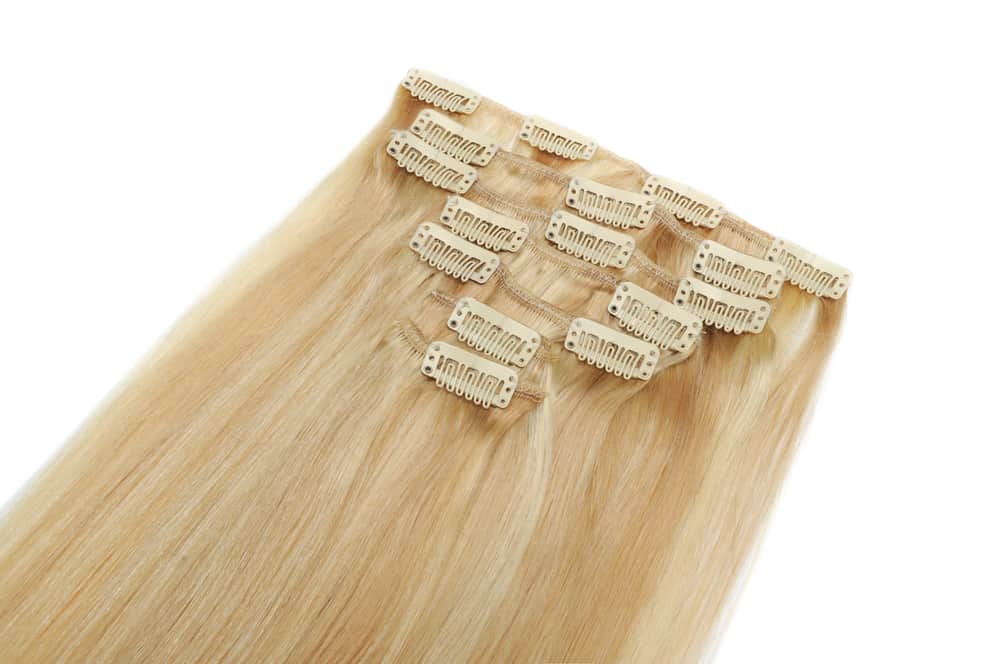
One of the easiest and least expensive types of hair extensions, clip-in extensions come in panels with either a fabric or silicone clip piece attached to the top, where the cuticles of the hair would be. You can apply clip-in extensions by yourself at home, and they take less than an hour to fully apply, depending on how many you are using and the placement of them.
Clip-in extensions are a good choice for someone who wants something easily exchangeable that doesn’t require much commitment. They are also a good choice for any fans of DIYing their own hair styles. As long as you take good care of the extensions while they are applied, they can easily be removed, washed, and reapplied to your hair.
How Long They Last
Your clip-in extensions are likely to last for approximately 3 to 6 months of constant wear, though this number will very a little bit depending on how you care for them, how regularly you wash your hair, and the material that the extensions are made out of.
Sew-In Extensions
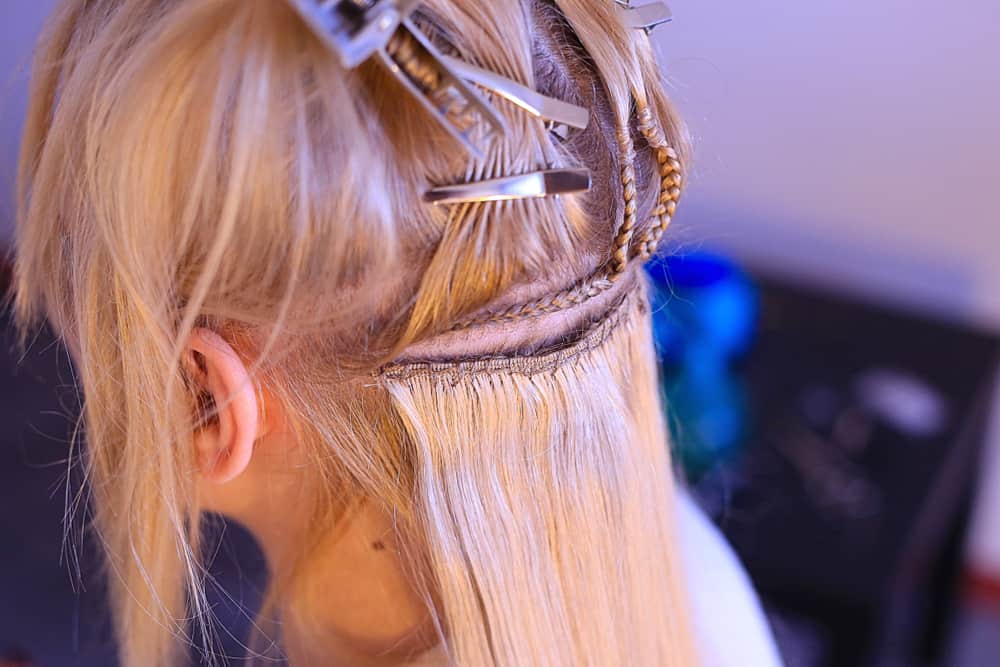
Also referred to as braid-in or weaves, sew-in extensions are a great choice if you want to wear a protective style on your hair or want a super durable extension that stays put for a long time. As these extensions are literally sewn into your hair, they are not likely to fall out, and it can often be hard to tell that the hair is even an extension, as the sew-in process doesn’t really leave an obvious attachment line.
That being said, sew-in applications can be fairly expensive due to the amount of time it takes to apply them (often upwards of three to four hours), and may not be the best choice for someone with very thin or fine hair, due to the fact that sew-ins tend to pull on hair and be applied very tightly; thinner hair doesn’t hold up to this process as well as thicker, coarse, or African American hair types do.
How Long They Last
Once you have sew-in extensions applied into your hair, you will need to regularly moisturize your scalp and apply regular deep conditioning treatments to keep your natural hair in good shape. This video can tell you everything you need to know about the basics of caring for sew-in extensions.
Additionally, you are best off replacing your sew-in extensions every six to eight weeks and leaving your hair to breathe in between applications, because leaving your hair with sew-in extensions too long can inhibit its natural growth. The longest recommended time for wearing a sew-in is up to four months.
Fusion Extensions
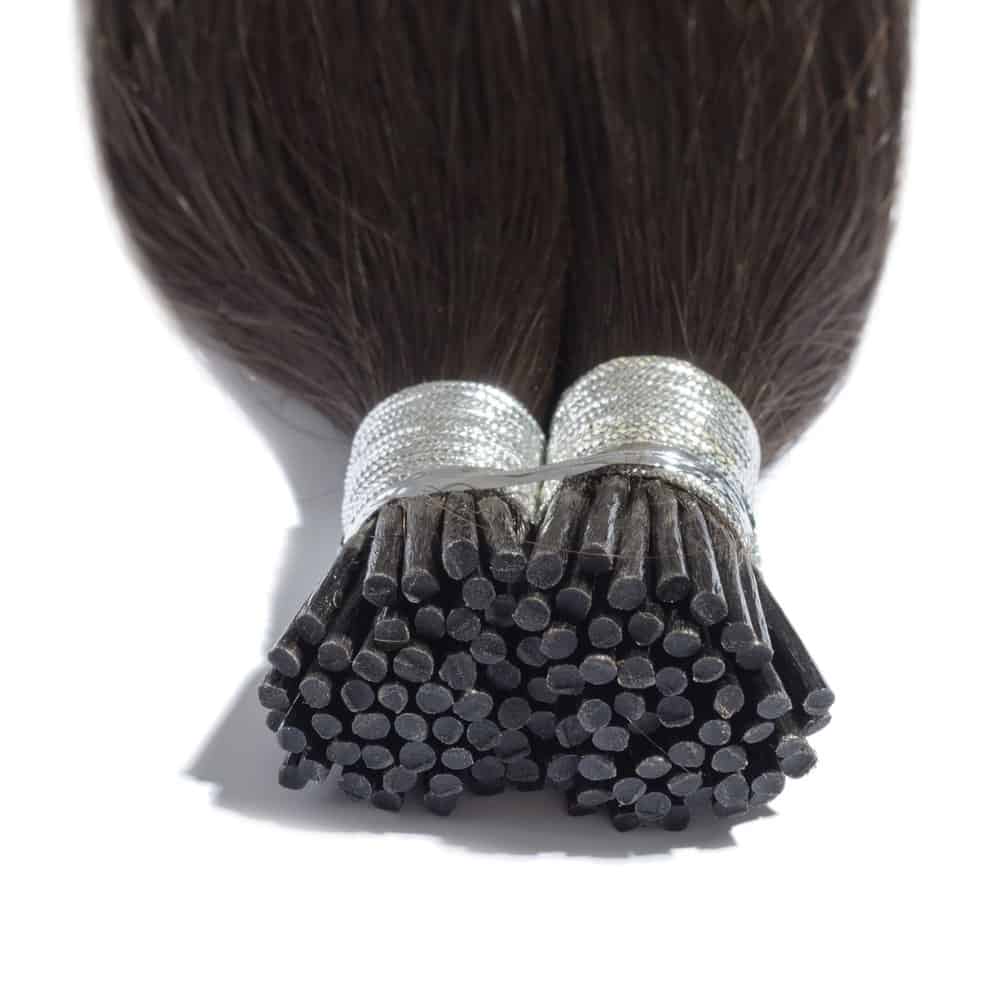
Fusion hair extensions are also commonly called bonded or pre-bonded extensions. They feature a tip on the end of the extension that is covered in an adhesive; a specialized tool that is similar to a hot glue gun is then used to apply the extensions to the natural hair strand by strand, gluing the pieces on.
It is a good idea to see a stylist for this type of extension, as they can take upwards of three hours to apply, and it can be difficult to glue these extensions to your hair all by yourself.
You can treat fusion hair extensions much like your real hair, and they generally hold up well when used with various hair products, shampoos, and conditioners. You will likely need the extensions to be repositioned every few months due to natural hair growth, but they can be reused.
One downside of fusion extensions is that they can cause a lot of hair damage as a result of the application process; the adhesive and heat combination can cause breakage, scalp irritation, or general hair loss.
How Long They Last
This is a semi-permanent hair extension, and they can stay in your hair up to four months without being repositioned. It is a good idea to take breaks between applications of this type of extension to allow your hair to restrengthen itself, preventing future breakage and damage.
Microlink Extensions
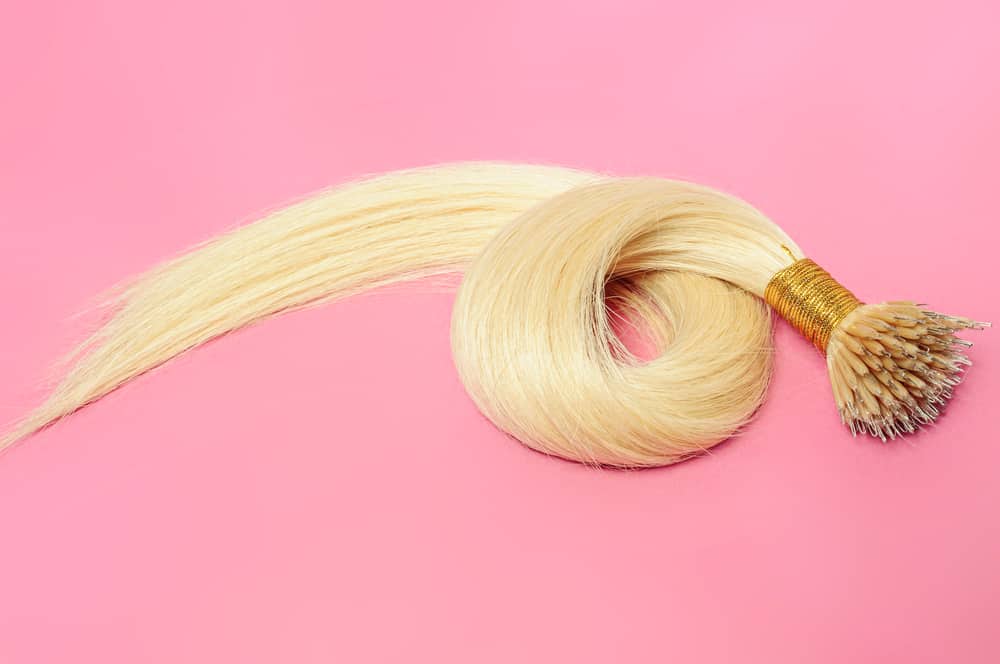
Also known as micro bead or loop extensions, a microlink extension is applied by attaching small strands of extension to the natural hair using a small bead. A special tool, like the one seen in this video, is then used to secure the bead holding the extension to the natural hair, tightly pulling the extension into place.
It does take a little longer to apply this type of hair extension, typically somewhere in between 2 and 4 hours, and they do need to be applied by a professional or someone with microlink experience. If microlink extensions are not applied or removed properly, they can cause too much pressure and pain on the roots of the hair, or pull hair out with them when they are removed.
You can treat microlink extensions similar to fusion extensions and your real hair, as they are often so secure there is not a lot of risk of the extension sliding or falling out. However, the microlinks will likely need regular repositioning as your hair grows out; typically, every two to three months is best for this.
How Long They Last
A semi-permanent hair extension, your microlinks can last up to four months without repositioning. You can reuse these extensions if they have been well taken care of, and you should be sure to give your hair a break between applications to prevent any major hair damage due to overuse.
Wigs, Hair Pieces, and Clip-In Bangs
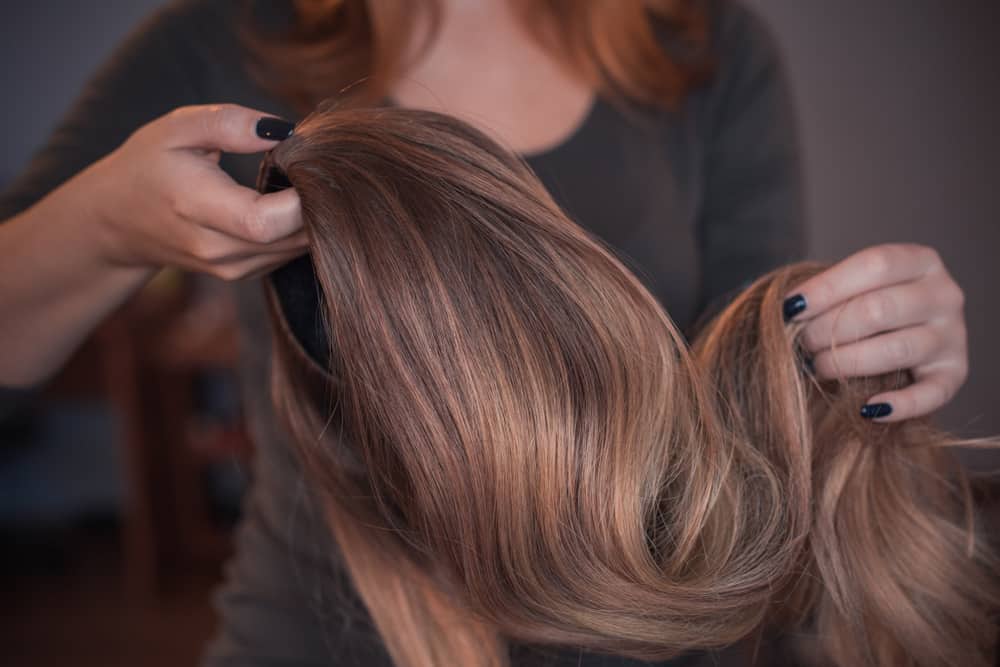
Though they aren’t technically hair extensions, wigs, hair pieces, and clip-in bangs can be just as helpful in changing up your style and increasing the length of your hair. Today, there are many types of synthetic or human hair wigs available that will look just like your real hair when applied correctly.
Depending on the material of the wig, hair piece, or clip in, you can treat it similarly to your own hair in terms of styling, though you should be careful to wash them regularly between uses and avoid getting them too wet while wearing them.
Hair pieces are perfect for adding length to a ponytail or a specific area of thinning hair, and clip-in bangs can be used in the same way as clip-in hair extensions.
How Long They Last
Most wigs, hair pieces, and clip-in bangs can at least a year with proper maintenance and care, with human hair lasting longer than synthetic hair.
Some items may last longer than a year depending on how they are treated and the material of the item, but for the most part, you can get a lot of use out of a wig, hair piece, or set of clip-in bangs before they start shedding and need to be replaced.
What to Remember When Getting Extensions
We’ve gathered a few helpful tips to make sure you get the most out of your new extensions.
- After you have decided on the type of extension that you want to receive, you should then look into finding a hairdresser or stylist with a good reputation and high skill in applying extensions. This is especially important if you are opting to get a sew-in or microlink extensions, or anything applying on a strand by strand basis, as these take considerable skill and time to complete properly.
- With wigs or clip-in hair extensions, you can most likely apply these yourself, but you should always remember not to place any type of extension too tightly onto your natural hair, as this can cause breakage or hair loss issues.
- Keep in mind that hair damage can and does happen with hair extensions, even if they are applied in the correct way. Check out this article for tips on revitalizing your hair after and in between extension applications.
- You should also know that costs for hair extensions can vary widely, as they depend heavily on the hair stylist you visit and what type of extension you are getting. Make sure to collect quotes from a number of places and compare them, though in general, you should expect to pay between 200 and 600 dollars, with the price extending all the way up to 3,000 dollars for extra-long, permanent, and high-quality extensions.
The Perfect Hair Extension for Your Style
The decision to get hair extensions is an easy one, but the hard part comes in when it’s time to select the exact type of hair extension you want – with so many different hair extension options available, it can be confusing to make your choice.
However, as long as you select an extension that offers you the most ease when it comes to styling and care, and fits both your budget and your desired look, you’re sure to find the perfect hair extension to define your style in no time at all.
